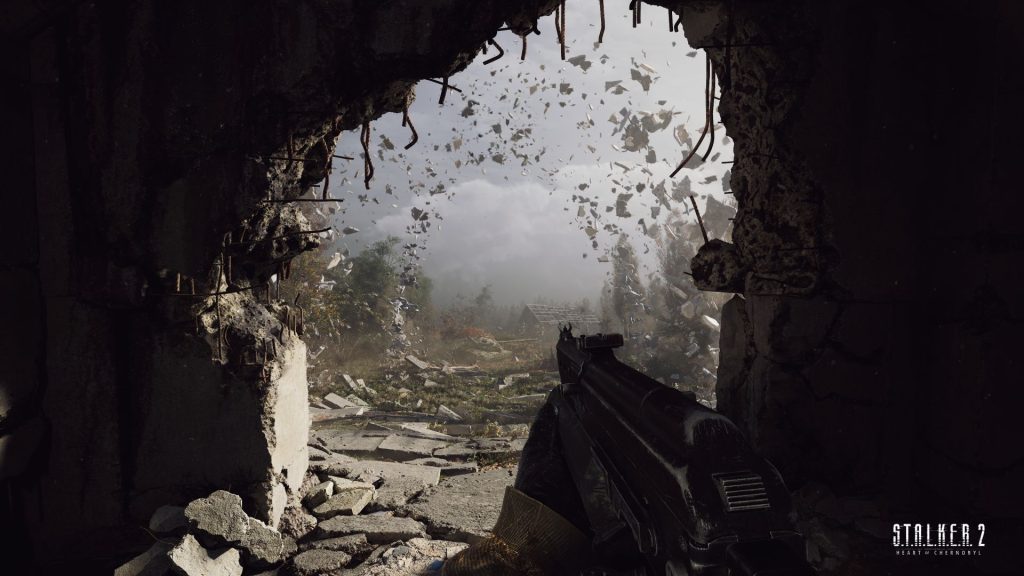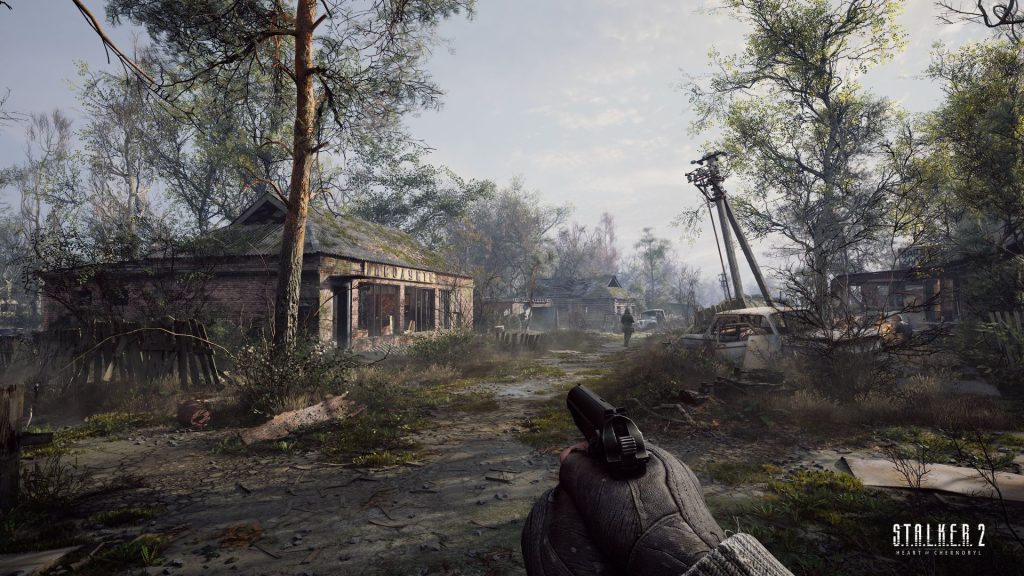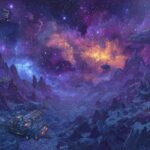After years of tweaks, patches, and quiet overhauls, GSC Game World’s long-awaited sequel finally hits PS5 this week. But, this isn’t just a port – PlayStation players will receive STALKER 2: Heart of Chornobyl at its most complete, where the Zone feels the most alive.
How alive? Picture this – you headshot a tower sentry then infiltrate a compound, yet your actions aren’t unnoticed in the pitch-black night. A nearby patrol circles in, flanking quickly to block your escape. Hidden for now, you spot a ladder scaling a warehouse roof. Figuring it’s better to shoot from above, you make a run for it. Flaying torchlight pierces the inky air as stomping boots thunder behind. Then… silence. Only the Geiger counter crackles as you climb the ladder, swiftly take position, and engage your night vision. There, before your pursuers, stands a pulsing mutant. It squeals as bullets pop; you catch a glimpse of scorching skin as muzzles flash. Your enemies stroll forward, kicking the pile of dead flesh before calmly looting its corpse.
Nasty, adrenaline-fuelled firefights are amongst STALKER 2’s standout features, but the sequel is laced with these emergent moments too. There are no scripts. No smoke and mirrors. Just STALKER 2, doing its thing. Its A-Life 2.0 update, when in full swing, allows unpredictable AI to run amok, while the latest Night of the Hunter update adds smarter NPCs to the mix, plus new animations, offset aiming, and even controller tweaks which match character movement to gear weight. These updates are more than feature lists – they enrich a world that breathes, reacts, and mutates in real time.
Why does this matter now? Because this PlayStation release isn’t just catching up to Xbox – it’s arriving on PS5 as the definitive version, refined by years of iteration, yes, but also built on something rarer: identity.
See, STALKER 2: Heart of Chornobyl doesn’t just simulate Ukraine – it runs on code written from memory. Its developers grew up in the real Exclusion Zone’s shadow, encoding its myth and melancholy into every pixel. Strugatsky’s Roadside Picnic, Tarkovsky’s movie sojourn, and similarly inspired games – Metro, Pacific Drive– each have their own version of the Zone, but GSC Game World’s interpretation hits differently. Their Zone isn’t fantasy – its memory, folklore, survival; radiated tapestries woven with haunted thread.
But here’s the thing: the sequel’s technical polish and cultural soul aren’t competing; they’re co-existing and interacting simultaneously. STALKER 2’s authenticity runs deeper than hand-drawn textures on weathered concrete. Its photorealism and raytracing, impressive it may be, can’t replicate a lived-through mournfulness. The more GSC has refined STALKER 2’s mechanical systems, the more humanity they’ve embedded into the experience.

So, how did we get here – to a Zone which feels alive? The short, metaphorical answer is radiation. Where energy and decay change everything they touch, systems evolve and behaviours shift. Like radiation itself, the Zone doesn’t destroy so much as transform. Every creature, every weapon, even your choices evolve under its invisible pressure, blurring the line between survivor and subject. Each update, each iteration of STALKER 2: Heart of Chornobyl, despite their plentiful improvements and additional features, has been less about achieving perfection and more about mutation. GSC haven’t just patched out bugs, but re-shaped the landscape into something untrustworthy.
See, it’s in radiation’s instability where GSC finds chaos, where the Zone doesn’t just respond to you but seems to actively remember who you are. Now, on the cusp of STALKER 2’s PS5 release, its 64-square kilometre wilds are less like barren marshland pockmarked by brutalism, but intimate and immediate killing fields where terrain and architecture push back with every step. And once you’re inside, you’re locked in battle; not just against the landscape but with other lifeforms, both human and otherwise – and they’re smarter, more astute, unpredictable, and dangerous than you.
Mutants act differently. Traders disappear without warning. Mercenaries turn on you – perhaps you catch them exchanging tense whispers, or hear their footsteps before noticing their approach. The world listens and responds, sometimes with dramatic consequence. Sparing hostages unexpectedly condemns an ally’s fate, while clearing enemy stations invites new invaders to camp.
Of course, the Zone was never meant to feel safe, but in AI tweaks, game engine upgrades, and level re-designs, the balance between realism and reactivity shifts. In the simulation’s push and survival’s pull, tension grows and STALKER 2’s pulse beats harder. It’s felt in the atmosphere – stillness becomes setup, voices unknown carry dread across the breeze – and unexpected detail, where your rifle jams just as a rival stops to heal their injured squadmate.
When improving the game, the devs talk of “dealing with anomalies” – a play on the Zone’s phantasmagorical threat, but its well documented GSC has made STALKER 2 under duress. It’s worth remembering how long this journey has been – near-cancellations, rebuilds, relocations, and setbacks now only highlight the studio’s resilience. The question is: what does this mean for players?
Well, circling back to authenticity, every accent, every radio crackle, every folk motif hummed by firelight, every detail carries a trace of home for the team. Whether it’s in weathered memorials, the careful scrawl of street signs, or the deliberate design of long-abandoned buildings – these elements aren’t window dressing. They’re silent stories which pull you deeper into the world. Labouring through the Zone, sunlight glinting between radiation-surviving birch trees, there’s no way this game was made in a distant boardroom.

And this degree of authenticity matters. In an industry where most AAA games chase scale and spectacle over soul, GSC’s approach becomes an act of defiance. The studio isn’t trying to degrade its world, but invite you into theirs. In STALKER 2, you’re not just surviving radiation. That truth beyond nostalgia? It’s spoken in half-life.
So, because of its radiation, STALKER 2 does more than glow but lingers. Ultimately, it’s a story of surviving the Zone, yes, but it’s also about what happens when the Zone gets under your skin. When living through constant dread starts to feel like second nature.
On PlayStation 5 this November, STALKER 2: Heart of Chornobyl presents one of the platform’s best opportunities to step into a visceral world – refined by years of iteration yet moulded by inescapable pressure. It isn’t just another open-world shooter vying for attention in a crowded market. It’s proof that authenticity has power. You’re not just ambling through someone else’s apocalypse, you’re experiencing life fighting back against the threat of decay. The Zone is more alive than ever, and the release of its most complete version on PS5 feels like a homecoming.
Note: The views expressed in this article are those of the author and do not necessarily represent the views of, and should not be attributed to, GamingBolt as an organization.


